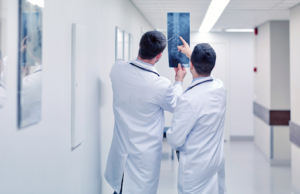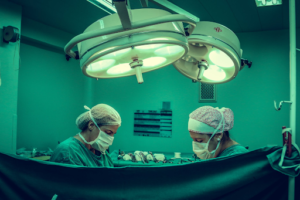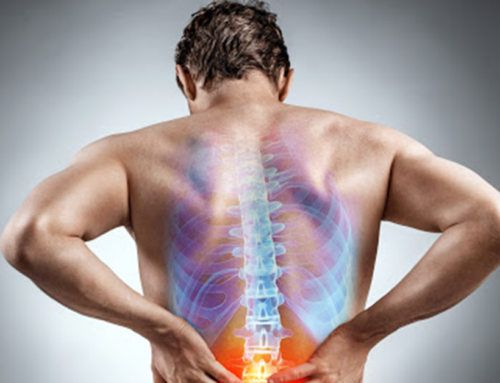About 20-40% of patients who have had back surgery will experience Failed Back Surgery Syndrome. If you had back surgery and are experiencing pain again, you might feel discouraged; you might wonder what you can do to feel better. This article will answer some of the most common questions that back surgery patients have.
What is Failed Back Surgery Syndrome?
Failed Back Surgery Syndrome is a term used in the medical community to describe a condition where a patient experiences pain after back surgery. Sometimes this pain occurs soon after surgery. Other times, it goes away for a while and reoccurs several years later. The term itself is somewhat misleading. Just because you experience pain after back surgery doesn’t mean that the surgery itself was a failure.
If you had your spine fused, it is possible that your body didn’t heal correctly after the surgery. Immediately after a spinal fusion operation, the spine is not fully fused. It has been set up so that it can fuse as it heals. Your body needs to grow bone to make this happen. If your body does not fuse the bones during the healing process, then the screws and plates used in the surgery will come loose over time. This can cause back or leg pain to happen after surgery.
Another reason for pain after back surgery is a continuation of the disease that made the first surgery necessary. Often, one part of the back will be successfully fixed during surgery, but five or ten years later, an area of the spine above or below the surgery area begins to have problems. In this case, surgery on the new area where degeneration is occurring may be necessary.
If your pain seemed better at first but came back 6 to 12 weeks after the surgery, it may be caused by scar tissue forming near the nerve root. The scar tissue itself is a normal part of healing, but when it develops near the nerve root in your spine, it can cause pain. This condition is called epidural fibrosis.
Do I Need Another Surgery?
If your surgery truly was botched, you might need another surgery to correct it. Spinal degeneration occurring in areas other than your previous surgical site may also require surgery. If your body didn’t fully fuse after a spinal fusion operation, your doctor may or may not recommend another surgery depending on your particular case. Pain caused by epidural fibrosis is usually not treatable with surgery.
What Are My Non-Surgical Options?
If your doctor does not recommend additional surgeries or if you need to wait before pursuing a surgical option, there are some non-surgical pain relief options available to you. These include chiropractic care and acupuncture.
When are These Options Safe to Use?
If you had back surgery at least six months ago and are still experiencing pain, you should ask your doctor about pursuing other pain management options. Chiropractic care is safe for many back surgery patients as long as it is done after the patient has fully healed from their surgery. This typically takes six months to one year.
Acupuncture can also provide pain relief and often works well when used in conjunction with chiropractic treatment. Sometimes acupuncture can be used soon after surgery to help with post-operative pain.
How Do Chiropractic Adjustments and Acupuncture Help My Pain?
Chiropractic adjustments can help relieve pressure on nerves and discs, alleviating your pain. Getting chiropractic treatment on a regular basis after healing from surgery can also help to prevent further degeneration of your spine. Manual adjustments and posture therapy can help to keep your spine aligned and healthy. A licensed chiropractor will know how to work with your surgery site safely.
Manual adjustment is the mainstay of chiropractic care and involves spinal manipulation done by hand. The purpose of this manipulation is to gently align the spine and take the pressure off of discs and nerves. Chiropractic adjustment also stimulates blood flow and can decrease inflammation and encourage healing. Depending on your particular case, you may need to see a chiropractor on a regular basis as a part of your continuing pain management strategy.
Posture rehab therapy involves stretching exercises that strengthen the muscles that support the spine. Your chiropractor may recommend posture rehab along with manual adjustments. Posture rehab treatments are usually done in a series and will come to an end when the patient’s goal has been met.
A typical posture rehab session is ten to thirty minutes long. Most exercises are easy to do at home and should be continued after office visits end. This therapy can help to create support for the spine and prevent further injury. It may also help alleviate your pain by stimulating blood flow and improving your overall musculoskeletal health. In some cases, these exercises can help to re-modulate the nervous system and actually stop it from sending pain signals from a certain area.
Some chiropractors offer other treatments, like laser therapy. This is an FDA approved non-invasive procedure that uses a laser to stimulate blood flow and nutrient exchange at the site of an injury. If you are suffering from nerve pain after surgery or have soft tissue damage around the surgery site that is struggling to heal, laser therapy offers a safe and effective option to speed healing and alleviate pain.
Unlike chiropractic care, acupuncture does not help to heal the source of your pain or realign your spine. It does help to calm nerve signals and is very effective at alleviating pain. Scientists aren’t sure exactly how acupuncture works, but most agree that the insertion of thin needles into specific areas stimulates your body to release pain-killing chemicals called endorphins. Acupuncture can be a great companion to chiropractic care.










